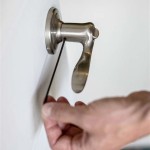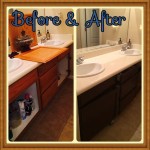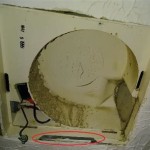Metal Bathroom Sink Stopper Stuck
A stuck metal bathroom sink stopper can be a frustrating plumbing issue. Understanding the different types of stoppers and their mechanisms helps in diagnosing the problem and implementing the appropriate solution. This article explores common causes and provides step-by-step instructions for resolving this issue.
Several types of metal sink stoppers exist, each with a slightly different operating mechanism. The most common types are push-down, lift-and-turn, and flip-it stoppers. Push-down stoppers are typically operated by a pivot rod mechanism located behind the faucet. Lift-and-turn stoppers have a knob that rotates to seal and open the drain. Flip-it stoppers utilize a lever located behind the faucet, flipping the stopper up and down. Knowing the specific type is crucial for effective troubleshooting.
Mineral buildup is a frequent culprit for stuck stoppers. Hard water deposits, primarily calcium and lime, can accumulate around the stopper and the drain opening, restricting movement. This buildup often creates a tight seal, making it difficult to lift or push the stopper.
Hair and debris can also contribute to a stuck stopper. Hair often wraps around the stopper or the pivot rod mechanism, hindering its operation. Soap scum and other debris can further exacerbate the problem by adding to the blockage.
Corrosion can affect metal stoppers, especially in older fixtures. Corrosion can impede the movement of the stopper within the drain opening or seize the pivot rod mechanism, making it difficult to operate.
Before attempting any repairs, it's essential to gather the necessary tools. These may include pliers, a wrench, a screwdriver, a flashlight, and a container to catch any spilled water.
For a push-down stopper, the first step is to locate the pivot rod under the sink. This rod is connected to a clevis strap that holds the stopper in place. Loosen the screw on the clevis strap and disconnect the pivot rod. This will allow removal of the stopper for cleaning and inspection.
Lift-and-turn stoppers can usually be removed by twisting the stopper counterclockwise. Some models may require a slight pull upwards while twisting. Once removed, clean the stopper and inspect the drain for any obstructions.
Flip-it stoppers are similar to push-down stoppers. Locate the lever behind the faucet and disconnect the linkage connecting the lever to the stopper. This will allow removal of the stopper.
Once the stopper is removed, clean it thoroughly with a cleaning solution to remove mineral buildup, hair, and debris. A toothbrush can be helpful for scrubbing hard-to-reach areas. Inspect the stopper for any damage, such as corrosion or broken parts. If the stopper is significantly damaged, replacement might be necessary.
While the stopper is removed, inspect the drain opening for any hair or debris. Use pliers or a bent wire hanger to remove any obstructions. Cleaning the drain with a drain cleaner can also help dissolve stubborn buildup.
After cleaning the stopper and the drain, reassemble the components in reverse order. Ensure all connections are secure and the stopper operates smoothly.
Preventing future issues involves regular cleaning and maintenance. Periodically remove the stopper and clean it to prevent mineral buildup and hair accumulation. Avoid using harsh chemicals that can corrode the metal stopper or damage the plumbing. Running hot water down the drain after each use can help flush away debris.
If the stopper remains stuck after attempting these steps, it may indicate a more complex plumbing issue. In such cases, contacting a qualified plumber is recommended. A plumber can diagnose the problem and provide the necessary repairs.
Understanding the specific type of metal stopper and its mechanism is crucial for effective troubleshooting. Regular cleaning and maintenance can prevent future issues and extend the lifespan of the plumbing fixtures.
Several specialized tools are available for removing stubborn stoppers. These include drain snakes, plunger tools, and specialized pliers. These tools can help dislodge stubborn blockages and facilitate the removal of the stopper.
In some cases, the pivot rod mechanism itself may be damaged or corroded, preventing the stopper from operating correctly. Inspecting the pivot rod for signs of wear and tear is important. If the pivot rod is damaged, it will need to be replaced.
When replacing a stopper, ensure compatibility with the existing drain assembly. Different stoppers have different sizes and threading. Measuring the existing stopper and drain opening will ensure the correct replacement is purchased.
While cleaning the stopper and drain, consider using environmentally friendly cleaning solutions. These solutions are less harsh on the plumbing and the environment while still being effective at removing buildup.
How To Get A Bathroom Sink Plug Removed When It Won T Un Quora

How To Fix A Bathroom Sink Stopper Step By Guide London Post
I Closed My Sink Drain Stopper And Now It Won T Open Again Is There Any Way That Can Repair This Without Hiring A Plumber Quora

Quick Tip 26 Pop Up Stopper Sticks Misterfix It Com

Is Your Sink Stopper Stuck Here S How To Fix It The Rolla Daily News

The Pop Up Drain Stopper For My Sink Is Stuck Hunker

How To Remove A Stuck Sink Stopper

How To Remove A Sink Stopper The Home Depot

How To Fix A Bathroom Sink Stopper That Is Stuck Shut Mr Kitchen Faucets

How To Replace A Rusty Sink Drain Howtolou Com
Related Posts







